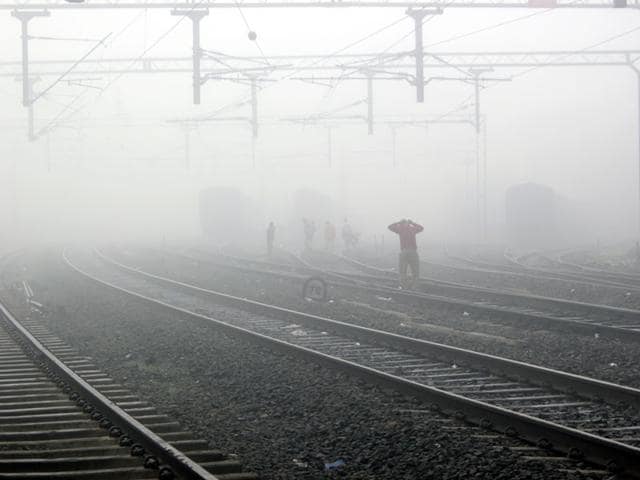Urban areas burning fog cover up Indo-Gangetic plains
Heat generated by large urban centres like Delhi is creating holes in the dense fog cover over the entire Indo-Gangetic plains in winter, satellite data sourced from NASA has revealed for the first time.
Heat generated by large urban centres like Delhi is creating holes in the dense fog cover over the entire Indo-Gangetic plains in winter, satellite data sourced from NASA has revealed for the first time.

Climatologists said any reduction of natural fog is a cause for concern because this process can alter local climate and increase pollution.
While fog develops throughout the night and stays on typically till mid-day affecting visibility, the heat islands created by the cities speed up the fog “burn off” over urban areas. The Indo-Gangetic plains stretch across parts of Pakistan, northern India, Nepal and Bangladesh.
“The holes [as big as the cities] are nothing but fog burn-off taking place in the middle of morning hours, which is in sharp contrast with the surrounding areas. One of the factors causing the formation of holes is the urban island effect, where the temperature within cities is higher and therefore warmer than surrounding rural areas,” said professor Ritesh Gautam from the Indian Institute of Technology – Bombay (IIT-B).
Gautam first presented the scientifically significant finding at a meeting of American Geophysical Union in San Francisco in December.
Urban heat islands, where buildings, roads and other structures absorb and radiate heat, make cities warmer than the surrounding countryside where the presence of more vegetation moderates the sun’s heat.
In an indication of the extent of air pollution and its impact on fog, Gautam who teaches at the Centre of Studies in Resources Engineering and is also affiliated with the Climate Studies Centre at IITB, said, “The phenomenon is likely caused by urbanisation, which is not a good sign because it is perturbing natural weather processes such as the fog cover that is largely formed because of meteorology. On the other hand, air pollution is also believed to influence fog cover. Thus, the impact of anthropogenic [manmade] activity, including urban heat islands and pollution, on fog cover is a highly intriguing problem.”
And while it’s the winter smog over Delhi that grabs headlines, it is states like Uttar Pradesh (UP) and Bihar that should be worried about colder winters.
A long-term analysis of winter fog over the Indo-Gangetic plains mapped from NASA satellite data from 2000 to 2014 for December and January revealed an increasing trend of both fog and pollutants over the plains’ eastern parts – UP, Bihar, West Bengal and parts of Nepal and Bangladesh – as compared to other regions. However, there was no clear trend of an increase in the fog cover over Delhi during the same period because of large meteorological fluctuations.
With around 900 million inhabitants, the plains are densely populated. A majority of the inhabitants are poor battling extreme winters every year.
“An increase in winter fog frequency implies more blocking of sunlight at the surface and therefore more cooling of the surface,” said Gautam. “Air pollution is already high over the eastern parts of the plains. Together with the predominant westerly [wind] flow, which causes more pollutants to be transported from the western to the eastern parts of the plains, leads to a further accumulation of pollution there. Once the fog is burned off, it leaves in the atmosphere humidified aerosols, leading to dense haze.”



